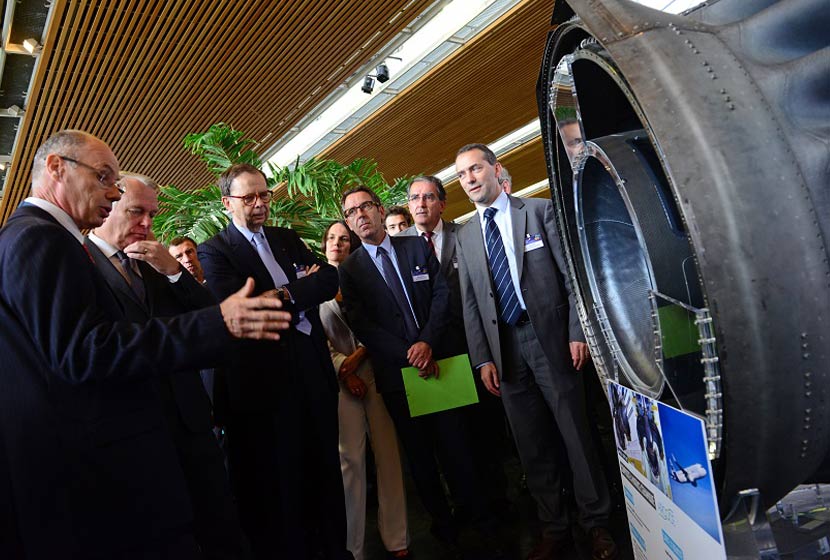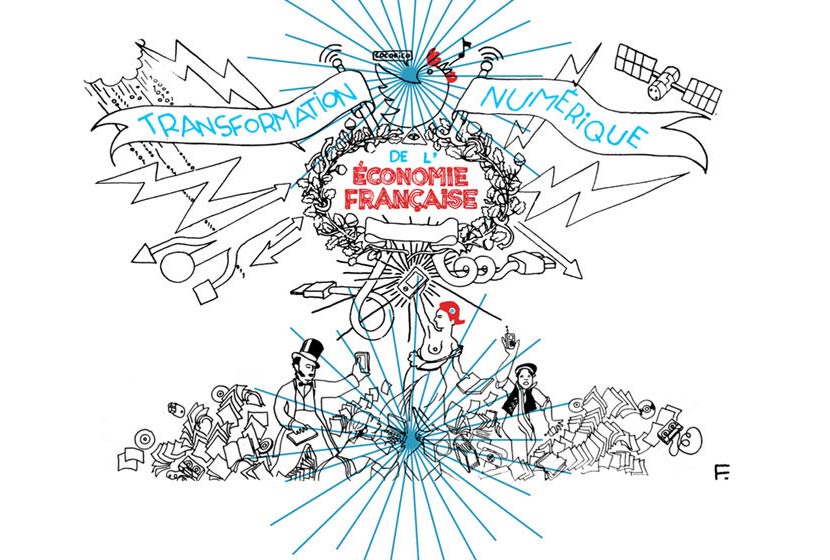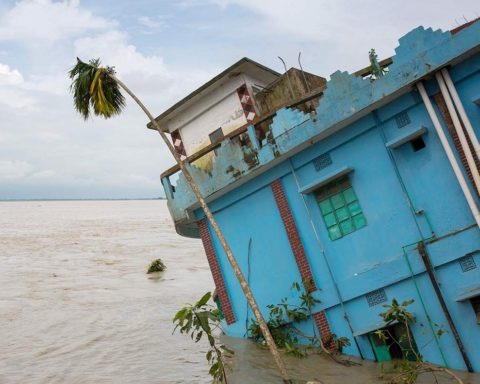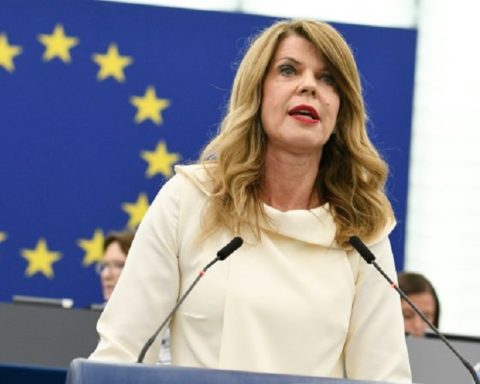Launched as part of the investment programme for the future, the Technological Research Institutes have the mission of developing highly competitive technological and economic sectors. Thematic, market-oriented and interdisciplinary, they bring together academic and industrial skills to enable them to innovate in strategic areas for France.
Their second national forum at the end of October, held in Nantes, France's third largest industrial region, in the presence of Jean-Marc Ayrault and Louis Schweitzer, was an opportunity to draw a first assessment, two years after their launch.
Investing today for tomorrow's growth
The Juppé-Rocard report is at the origin of the Investments for the Future programme, to take up the challenge of competitiveness and bring about a new growth model, with six strategic axes for the future. The aim of these investments is to promote French excellence in higher education and research. They finance a continuum of action ranging from fundamental research to industrial innovation, training, technology transfer, maturation, etc.
The IRTs - Technological Research Institutes - were therefore created with the mission of developing highly competitive technological and economic sectors. Eight IRTs exist today, spread across the territory.
More than 120 research projects have been launched
With an average duration of 3 years, these projects are starting to bring concrete results: demonstrators, first patents (about fifteen already filed while the first research projects have not yet come to an end), startups in gestation or creation (three in progress). And the IRTs show on a daily basis that they are able to set up and start up new research projects in about six months, which is a real asset.
Nearly 150 technology SMEs have joined TRIs
They take part in research projects alongside major companies and academics. They account for 2/3 of the industrial partners of TRIs and this ratio is expected to increase further. In this way, the TRIs play an important role in stimulating collaborative research between large groups and SMEs and in strengthening the dynamics of players within industrial sectors.
Around fifty structural equipment, platforms and test facilities have been set up: they confirm the importance of experimental research in industrial conditions (scale 1) to accelerate innovation and transfer to the market. These resources, which are often expensive, are pooled within the TRIs, generating significant savings and providing access to SMEs.
A commitment at the international level, and in particular at the European level
Around ten research projects have been submitted or are in the process of being submitted as part of the calls for projects of the European Union's Horizon 2020 framework programme, launched at the beginning of 2014. The pooling of skills and experience thus makes it possible to bring on board many partners who do not have the critical mass to go it alone: SMEs but also ETIs and academics.
Most TRIs have started to develop programmes in areas complementary to research: innovation, support for SMEs, support for start-ups, initial and continuing training. In particular, the IRTs have jointly launched a project concerning the training of doctoral students hosted in the IRTs (knowledge of the company, research and industrial innovation, intellectual property, etc.) to prepare them for integration into companies.
In most TRIs, the project is largely supported by the local authorities (especially on buildings, equipment, SME programmes) and the entire ecosystem, which accentuates the structuring effect of TRIs. In particular, the approach of rapprochement with the competitiveness clusters makes it possible to reinforce the ripple effect and diffusion of the TRIs throughout the industrial fabric.

Photo ©UP' Magazine
Innovation at the service of value creation
Gérald Lignon, President of the IRT Jules Verne of Nantes and President of the association of IRT Presidents, which is in the dynamic of the first results, emphasises the IRT as an accelerator of innovation but also as a tool for the development of SMEs. "The IRT is a model that is showing results today, so it works. It is a collaborative and effective model, which has been able to integrate SMEs despite the initial ten-year commitment: 50 % of SMEs are with us. The TRIs are a locomotive pulling our ecosystem forward, forging links between the TRIs themselves, between academics and large groups. »
We are therefore launching the IRT Presidents' Association to establish a commitment to promotion with national and international visibility. First discussion: how to continue to improve the IRTs? How can we make them more agile, simpler and faster to achieve more results? »
Jean-Marc Ayrault: "The IRTs have entered cruising speed"
"As Mayor of Nantes, I am pleased to have supported the Jules Verne IRT project and, as Minister, the approach taken since the Juppé-Rocard Commission, which gave rise to the Investments for the Future programme, a fine example of political continuity with today's government organisation, the Commissariat Général à l'Investissement, responsible for implementing this programme, headed by Louis Schweitzer, who is very familiar with the world of industry.
There's a lot of talk about structural reform - a bit of cream pie! - In terms of the stakes, we are far from being at the level... The level is the one that is at work here through the TRIs: bringing fundamental research closer to companies' R&D, which is insufficient, pooling, bringing together and transferring these technological leaps, these technological breakthroughs that enable industrial innovation. Competitiveness is first and foremost the capacity that we give companies to innovate. In order to do this, we need the means. In financial terms, this has already been done, since EUR 47 billion has been allocated to this programme, of which a first part of EUR 35 billion was voted on in 2010 and the second part of EUR 12 billion in 2013. We also need to bring together what is already working and could work better within the framework of the competitiveness clusters. An experiment has been created here in the Pays de la Loire region, called TechnoCampus which is in fact an anticipation of industrialists, private research teams and public research teams coming together to move in this direction.
Support for investment must make it possible to set the various players in motion so that the State can have a leverage effect and companies can develop a dynamic that is sustainable. The TRIs have therefore entered cruising speed and will contribute a great deal to the economic development and territories of our country".
Louis Schweitzer, Commissioner General for Investment, calls for better collaboration and permanent dialogue between TRIs
 "We want to preserve the future when rigour is applied to all budgetary appropriations. We still need to innovate despite this rigour, which is likely to last. The core of the Commissariat's activity is to support fundamental research actions, actions directly aimed at companies, but above all to support the transition from fundamental research to innovation in companies with several mechanisms, of which TRIs are an example: 50 % of State capital, 50 % external from local authorities but mainly from companies. This brings together public research (universities, CNRS, etc.) and companies, SMEs and large companies, because in France we are very good at public research and at creating companies (the leading European country in terms of company creation), especially very large ones. One of the reasons is that there is not enough cooperation between companies in France. Each company lives a little for itself. An important point of the TRI system is not only to work with companies, but also to encourage them to work with each other.
"We want to preserve the future when rigour is applied to all budgetary appropriations. We still need to innovate despite this rigour, which is likely to last. The core of the Commissariat's activity is to support fundamental research actions, actions directly aimed at companies, but above all to support the transition from fundamental research to innovation in companies with several mechanisms, of which TRIs are an example: 50 % of State capital, 50 % external from local authorities but mainly from companies. This brings together public research (universities, CNRS, etc.) and companies, SMEs and large companies, because in France we are very good at public research and at creating companies (the leading European country in terms of company creation), especially very large ones. One of the reasons is that there is not enough cooperation between companies in France. Each company lives a little for itself. An important point of the TRI system is not only to work with companies, but also to encourage them to work with each other.
One of the objectives of the IRTs is to make the companies in a sector or a trade work together in order to be more efficient and to feed each other. This is what is organised in France's eight IRTs. They are all autonomous and we try to increase their freedom of action by avoiding subjecting them to controls that restrict their development capacity, but it is also important that these IRTs talk to each other. Because each one has its own experience, its relations with companies, its relationship with universities. And by exchanging these experiences, we all know that the practice becomes better. So beyond representation, it is the permanent informal dialogue that must take place between all the TRIs, so that innovation can irrigate French competitiveness. »
The eight French TRIs, with 210 industrial members and 90 academic members
-• IRT bcom (Digital technologies, Rennes),
-• IRT Bioaster (Microbiology and Infectiology, Lyon- Paris),
-• IRT Jules Verne (Advanced manufacturing, Nantes),
-• IRT M2P (Metz Materials, Metallurgy and Processes),
-• IRT Nanoelec (Nanoelectronics, Grenoble),
-• IRT Railenium (Railway, Valenciennes),
-• IRT Antoine de Saint Exupéry (Aeronautics, space, embedded systems, Toulouse)
-• IRT SystemX (Digital Systems Engineering, Paris-Saclay).
 The example of the latest TRIThe IRT Saint Exupéry and its OCE project, Observation et Compréhension de l'Environnement (Observation and Understanding of the Environment), which studies future Earth observation services within 10 years. They feel they benefit from high-level access to information, being closer to the end user and more responsive. Their technologies require the programming of complex systems, in particular satellite programming, which requires several hours of calculation and can be reduced to 5 minutes. This requires the best optimisation calculations on the ground, which are enormous and require more autonomy for the satellite. They will have to import web-type technologies into the space universe. Their current partners are Airbus, TAS, Spot images,... And their final objective is the final service, such as answering the precise request of the National Geographic Institute in claim of requests.
The example of the latest TRIThe IRT Saint Exupéry and its OCE project, Observation et Compréhension de l'Environnement (Observation and Understanding of the Environment), which studies future Earth observation services within 10 years. They feel they benefit from high-level access to information, being closer to the end user and more responsive. Their technologies require the programming of complex systems, in particular satellite programming, which requires several hours of calculation and can be reduced to 5 minutes. This requires the best optimisation calculations on the ground, which are enormous and require more autonomy for the satellite. They will have to import web-type technologies into the space universe. Their current partners are Airbus, TAS, Spot images,... And their final objective is the final service, such as answering the precise request of the National Geographic Institute in claim of requests.
These TRIs should therefore enable a major shift in the rapprochement between academics, researchers, SMEs, etc. From cultural reform, we would finally move on to a real structural reform.
Fabienne Marion, Editor-in-Chief












